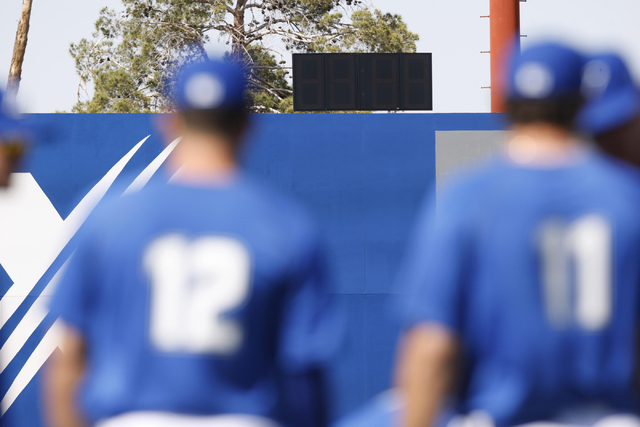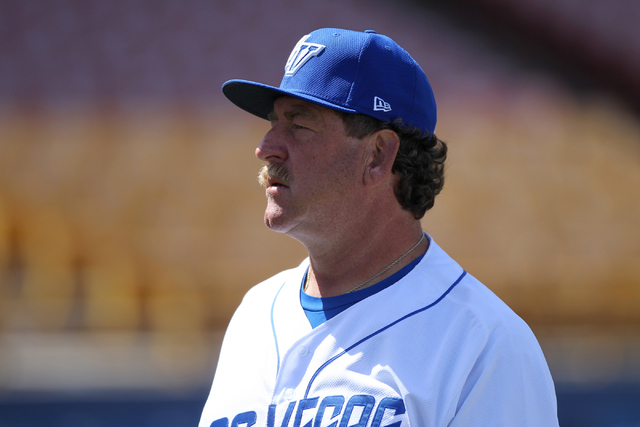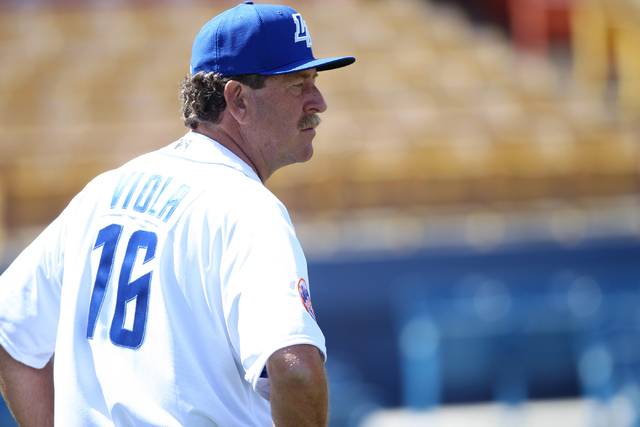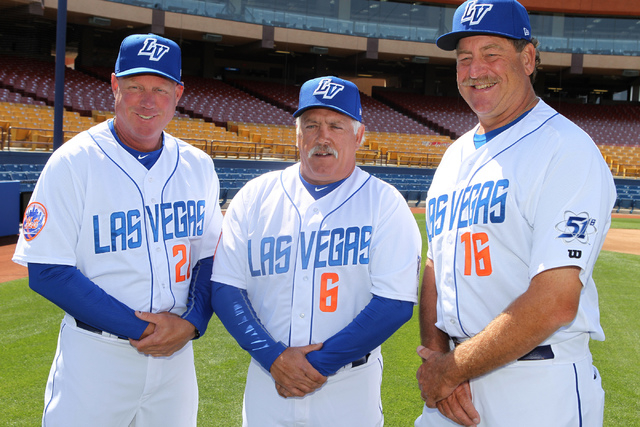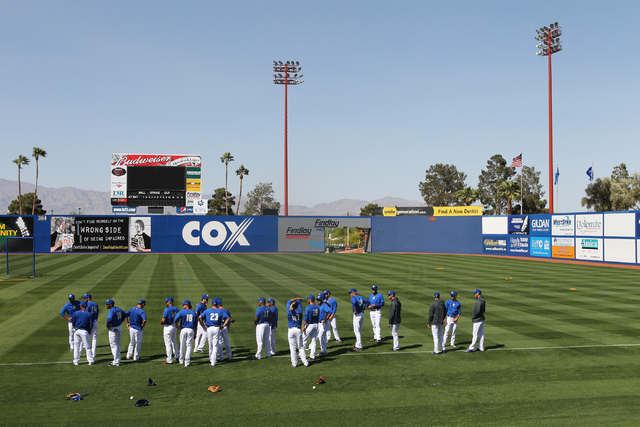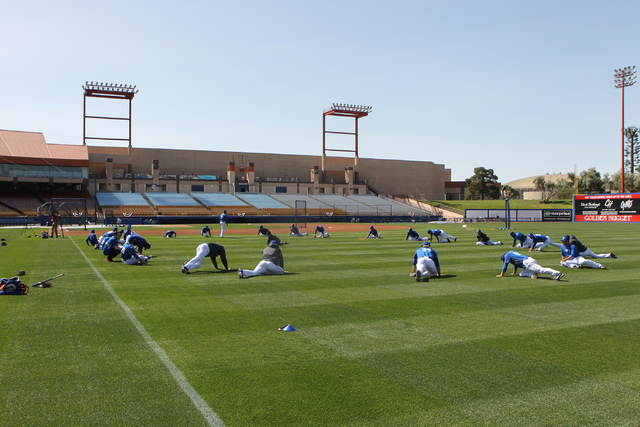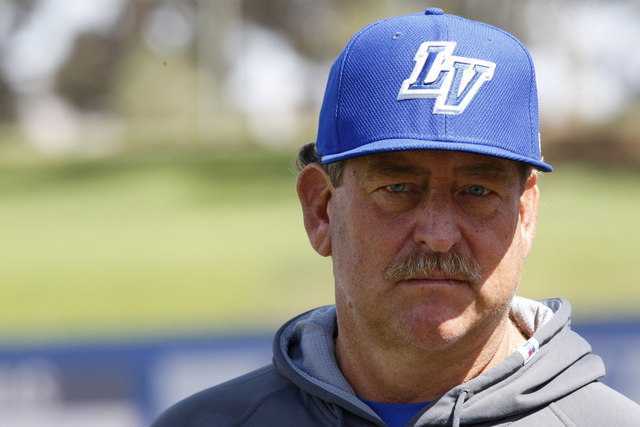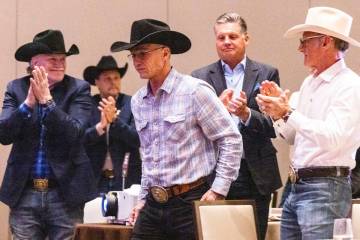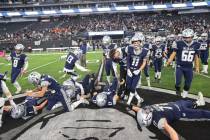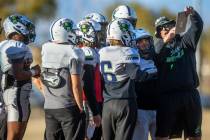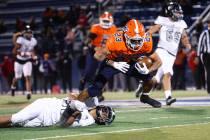51s pitchers hoping to beat the clock
The first thing you noticed on official 51s media day is that the 51s had few silly-looking beards in contrast to their big league counterparts. This supports my notion that if major league games and highlights weren’t shown on a continuous loop on ESPN, there would be fewer silly-looking beards.
I also noticed there weren’t any giant banners of Chin-Feng Chen — Las Vegas’ career leader in home runs — disguising a renovation project of the outfield bleachers, like the Cubs are doing with those Ernie Banks banners at suddenly not-so-beautiful Wrigley Field.
This was probably because Cashman Field does not have outfield bleachers. And even if it did, the 51s probably wouldn’t be renovating them, because team principals still insist they are getting a new ballpark, and so that would just be throwing away money.
A third thing noticed was a black box above the wall in deepest left-center field.
At first I thought it was a small message board.
“HIT THIS BOX, WIN A FREE BUFFET AT EASTSIDE CANNERY.”
“NEW CASHMAN FIELD COMING IN 2525.”
I was told the black box is the new baseball clock.
No, not the baseball clock that prompted the Cubs to stash Las Vegas slugger Kris Bryant in the John Deere League — despite ripping the cover off the ball during spring training, Bryant is at Triple-A Iowa for a couple of weeks instead of freezing his assets off in Wrigley Field so he can’t become a free agent a year earlier.
No, these are baseball clocks that supposedly will speed up the game from a snail’s pace to a real fast snail’s pace.
It’s being tried experimentally in the bushes, because that’s how baseball does things — it uses its minor leagues as a laboratory whenever it considers changing the game. Which isn’t often.
This would explain why the 51s wore giant batting helmets a couple of seasons ago that made them look like the Great Gazoo from “The Flintstones.”
On Opening Day, baseball was running commercials featuring a voice-over that I think was supposed to be a wizened scout, saying the game was better than ever.
Well, in 1947, the average length of a big league ballgame was 2 hours, 27 minutes. In 2014, it was 3:08. That’s not better than ever, unless you enjoy rock music being blasted at Spinal Tap level “11” when some Paul Assenmacher clone is summoned from the bullpen to pitch to one batter.
So this year, pitchers in the high minors — Double A and Triple A — will be allowed only 20 seconds before starting their windups. After a one-month grace period, those who take too much time going to the rosin bag will be assessed a one-ball penalty.
It works the other way, too. Hitters who step out of the box to adjust their batting gloves after every pitch will be docked one strike. Pity Mike Hargrove, aka “The Human Rain Delay,” were he still around.
So these hitters had better catch the signal from the third-base coach before they knock dirt from their cleats.
Or hope the pitcher fakes a throw to first base.
Or steps off the rubber.
Or is overcome by flying insects, the way Joba Chamberlain was pitching for the Yankees in the playoffs that one year.
Any of those things would reset the 20-second clock.
So it’s possible that instead of speeding up the game, the clock might slow it.
Anyway, I asked 51s pitching coach Frank Viola about the pitch clock. Viola said he likes it, because when he was in the bigs, winning 176 games, he preferred to work quickly. Working quickly keeps the defense and beer vendors on their toes.
He also believes its impact on the pace of play will be minimal.
“It has its positives; it also has its negatives,” Viola said. “The biggest thing is: Work quicker.”
Viola said he hadn’t bothered to remind 51s pitchers about the 20-second limit as Las Vegas wound up preparations — one final batting practice and round of fungoes — before heading to Fresno for the Pacific Coast League opener today.
“They addressed it enough during spring training,” he said. “We’ll see how it goes in the beginning.
“The big thing is, if your internal clock is getting close for any reason, you just step off the rubber and it starts over again. So you do have ways of getting around it.”
There also will be limits on time between innings — 2 minutes, 25 seconds for most games, 2:45 for TV games. So Viola said if a pitcher worked fast, he actually could get in more warmup pitches than before.
He said if baseball really wants to speed up the game, it should just open up the strike zone — give pitchers an extra inch and a half on the outside corner, and take away the inside corner.
“The hitters will adjust and start putting the ball in play,” Viola said.
And then pitch clocks wouldn’t be necessary, or they could be converted into message boards that said the 51s would be getting a new ballpark by 2525.
Las Vegas Review-Journal sports columnist Ron Kantowski can be reached at rkantowski@reviewjournal.com or 702-383-0352. Follow him on Twitter: @ronkantowski.



